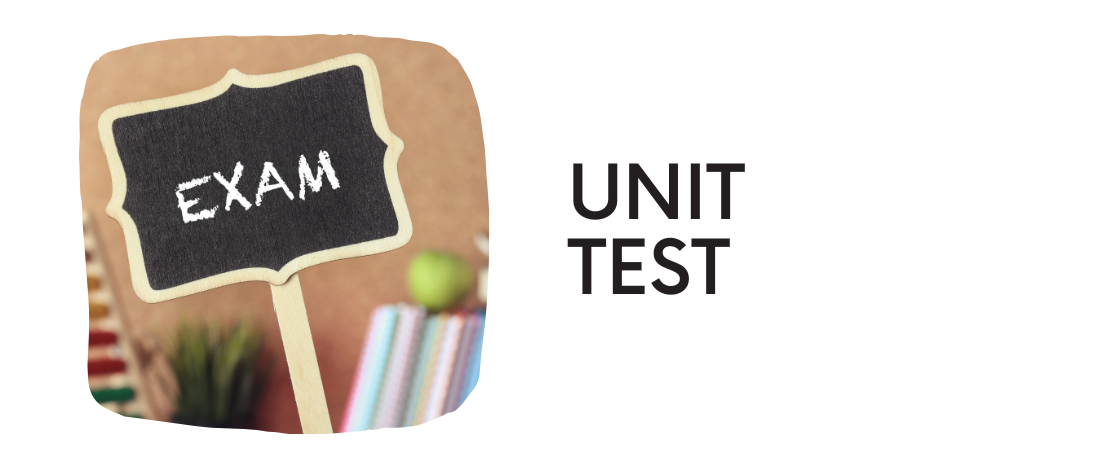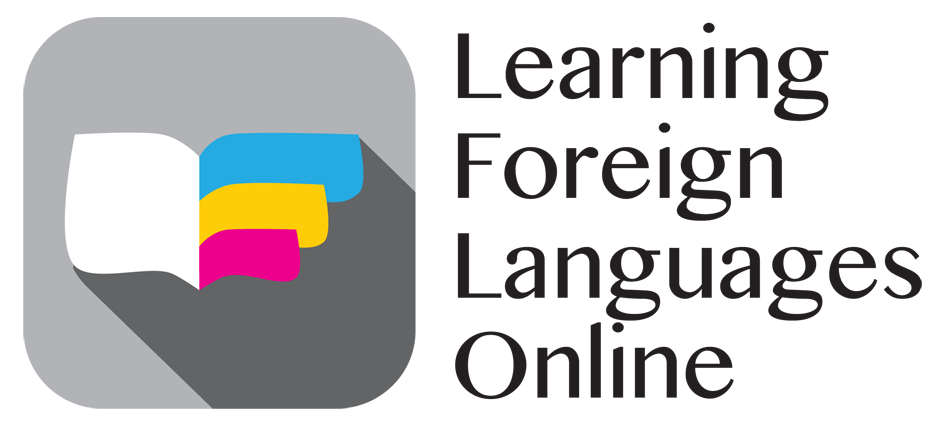
E-course
Implementing learning plans
Module 1 | Unit 4
Introduction
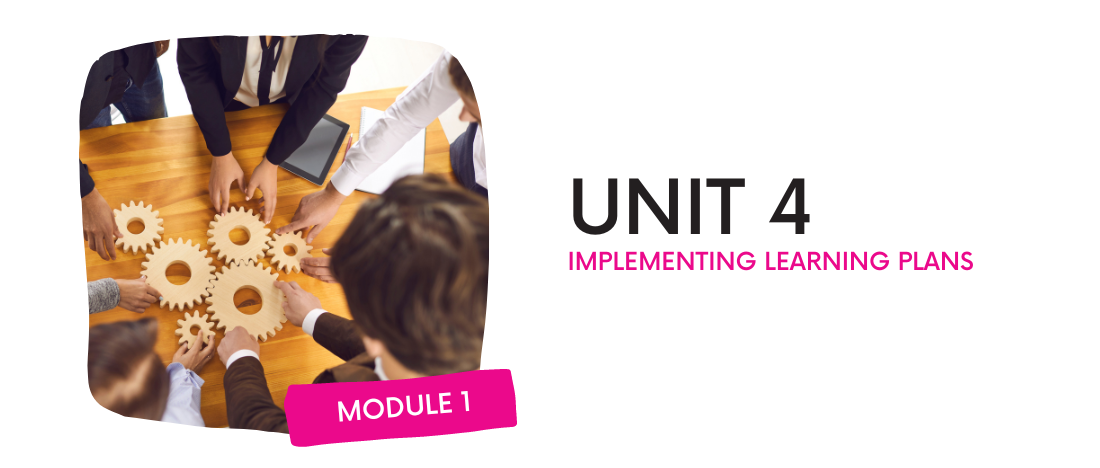
Since the way to design a successful learning plan has already been defined, you are now ready to move on to the implementation phase. At this stage you will break down your initial goal into individual steps in order to accomplish it. The implementation plan is very important so that you can understand what activities your tasks will include, how much time they will require, how they can be completed and what the desired outcomes of each task will be.
Getting started
Tips

The following is an implementation process diagram.
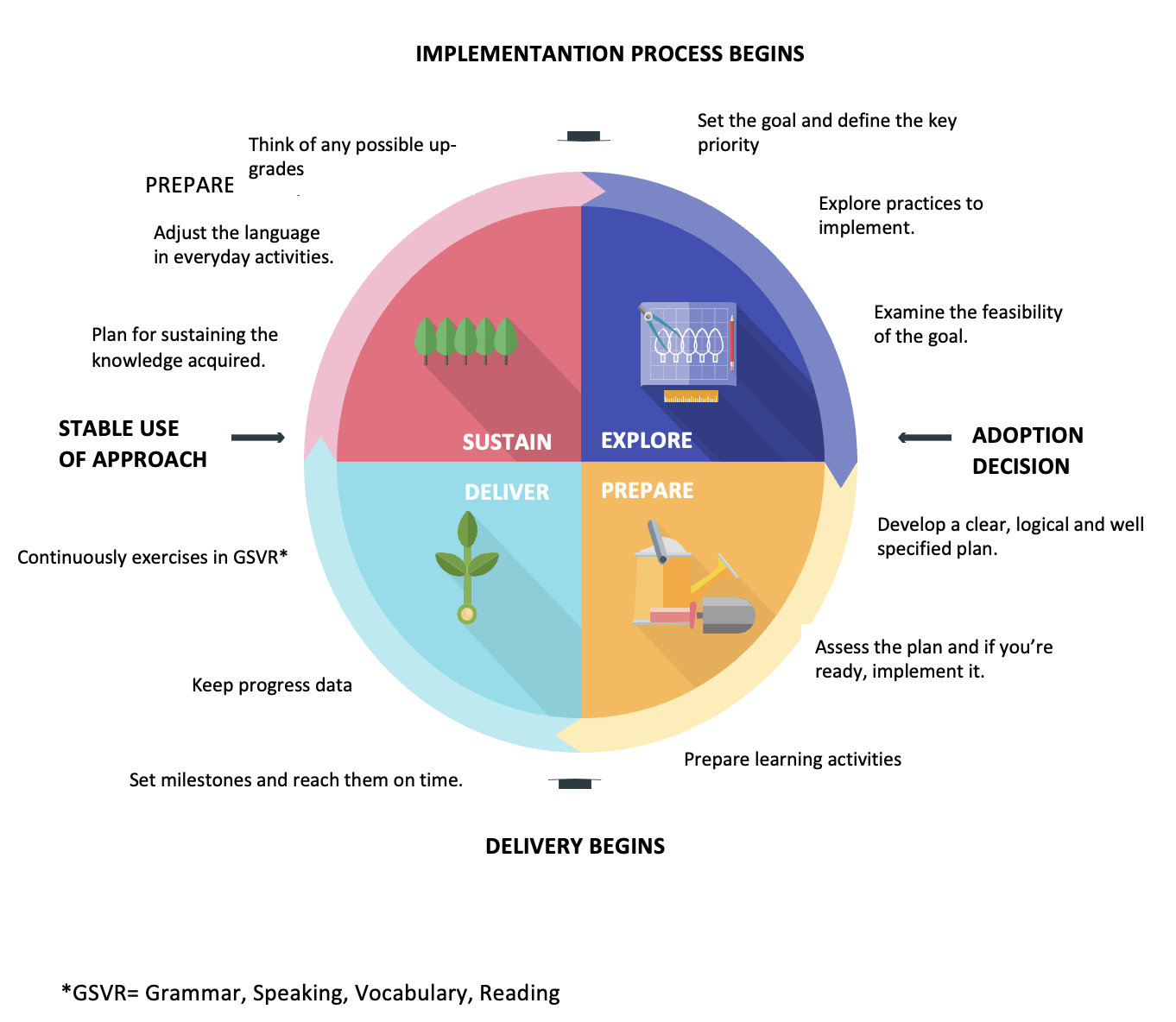
The above scheme illustrates the implementation process and the factors you have to take into consideration in order to accomplish it.
1. Exploration phase
In this phase the aim is to determine which practice is the most appropriate by considering the needs and feasibility of the original objective. You need to focus on understanding the problem, not solving it, otherwise you will become confused with your work and lose direction.
2. Preparation phase
The aim here is to create and launch an effective and feasible plan. Start creating the steps that will lead you to your ultimate goal. Be very specific and clear in the way you articulate your tasks so that you can implement them with ease. You should then evaluate everything you have done so far to correct any inaccuracies. Also, at this stage you can prepare and distribute all your learning activities throughout the project.
3. Delivery phase
Once all deliverables and requirements have been defined and the project schedule has been created, you are now heading towards the delivery phase. This is where you can actually implement the plan you designed in the previous step and deliver the desired results. During the execution of the plan, all learning activities (tests, creative learning activities, milestone checkpoints, etc.) are implemented.
4. Sustain phase
This process includes the activities you have planned in order to maintain the knowledge acquired in the previous phases. This includes monthly tests, progress assessments, reading books or listening to podcasts in your chosen language, etc. If you want to succeed in the learning process, you need to adapt this language to your daily life so that you do not forget it.
Here you can find a draft of a learning plan. This draft is optional if it doesn’t fit your needs fill free to create your own.
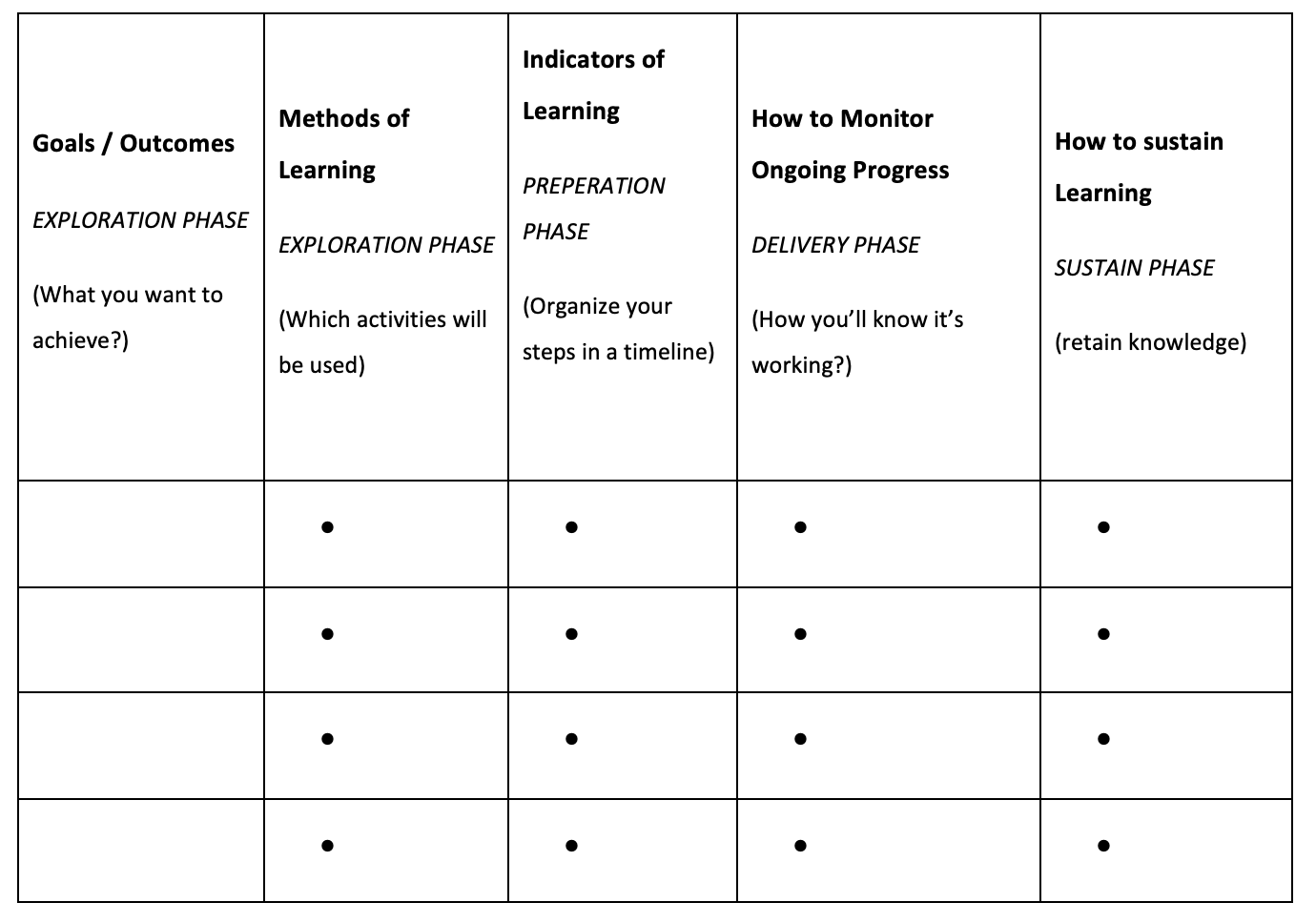
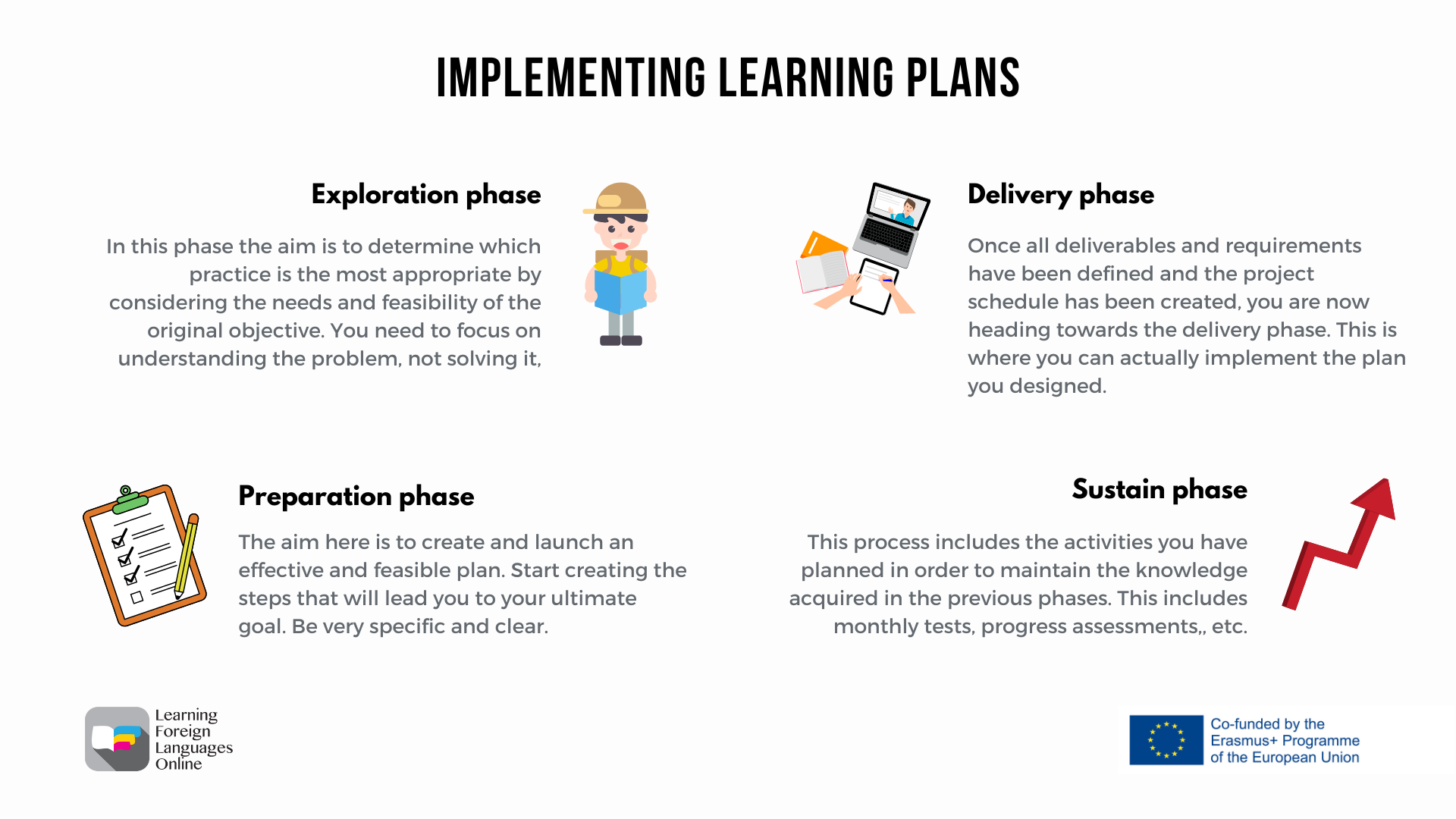
More resources

Still want to continue learning about the topic of this unit? Not to worry, we have made a selection of further resources that you can use if you would like to find out more. Just click on the links and keep learning!
Practical tasks
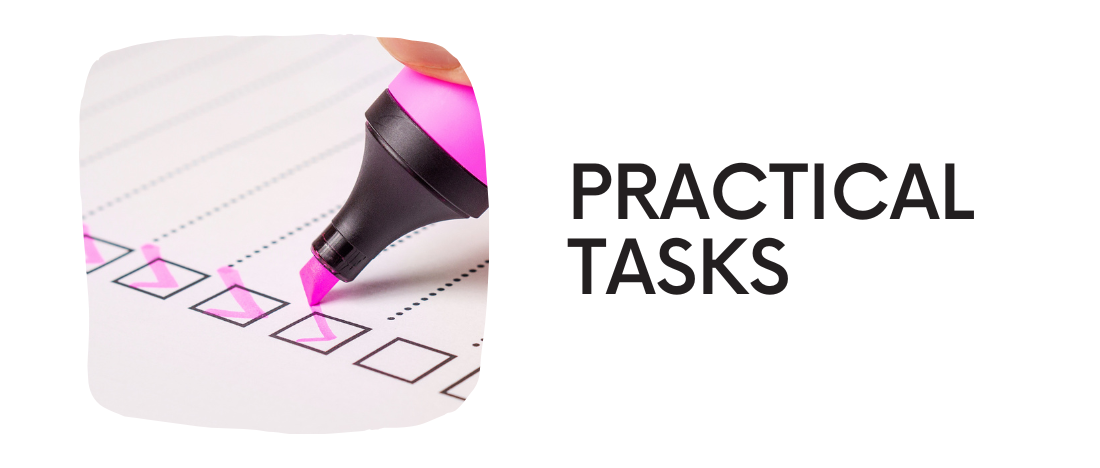
After reading the unit, now try to implement the following tasks:
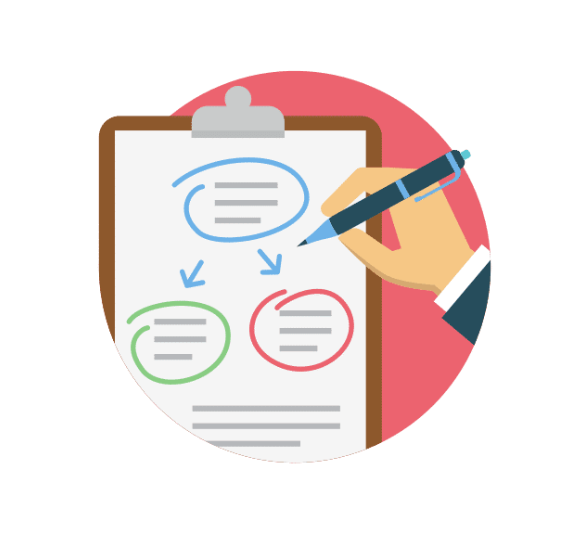 When you complete your lesson plan, then you are able to implement it. Giving yourself as much time as you can to organise the course. Successful courses require careful planning and continual revision. For example, any course at a foreign language school would have a start and end date, a certain number of school hours per semester and a final test. Choose the date and time for your course, prepare all the necessary materials, find a quiet place and focus on the learning.
When you complete your lesson plan, then you are able to implement it. Giving yourself as much time as you can to organise the course. Successful courses require careful planning and continual revision. For example, any course at a foreign language school would have a start and end date, a certain number of school hours per semester and a final test. Choose the date and time for your course, prepare all the necessary materials, find a quiet place and focus on the learning.
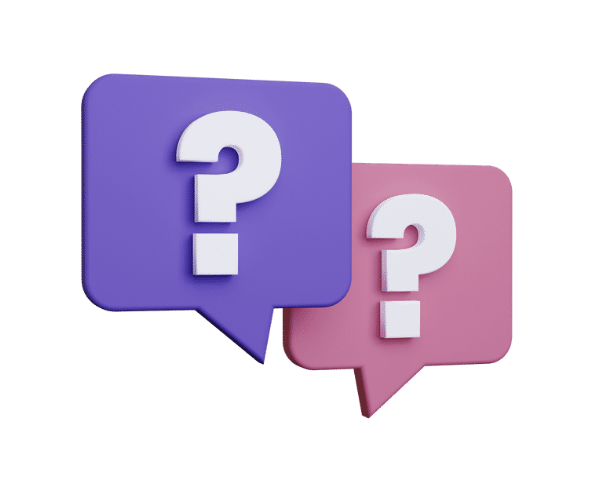 Define course goals. Having the goals in your mind will help you make decisions about which content to include, which teaching methods to use, and what kinds of assignments and exams are appropriate during the course. For example, if you want to improve your listening skills then you should make a plan including audio exercises and courses and set a time frame that you will work on them.
Define course goals. Having the goals in your mind will help you make decisions about which content to include, which teaching methods to use, and what kinds of assignments and exams are appropriate during the course. For example, if you want to improve your listening skills then you should make a plan including audio exercises and courses and set a time frame that you will work on them.
An example of this could be:
- Practice a story on this site (learn.storylearning.com) a day for two weeks.
- Complete 15 songs from this site (lingoclip.com) in a period of 1 month.
- Listen to 3 stories per week on storylineonline.net.
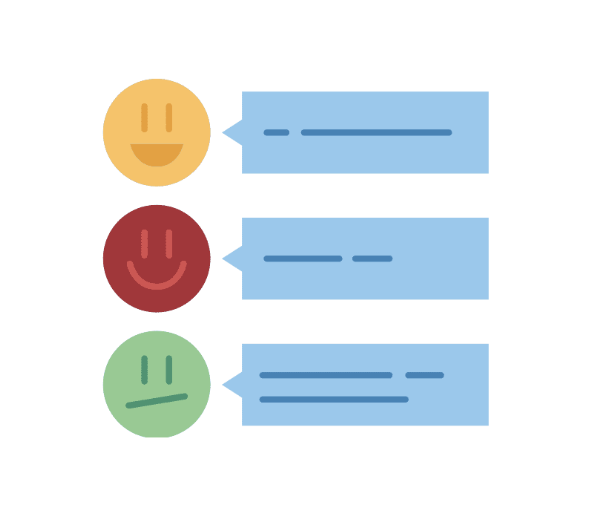 Review the learning content of the lesson plan you created on the 1st task. Narrow and refine your initial list of topics. Often students seem to plan more material than they can cover in the allotted time. For example, you may have planned to solve 12 exercises, but in the process, you find that you don’t have the time. A practical task could be to create a table with the goals set primarily and the actual goals managed to be achieved.
Review the learning content of the lesson plan you created on the 1st task. Narrow and refine your initial list of topics. Often students seem to plan more material than they can cover in the allotted time. For example, you may have planned to solve 12 exercises, but in the process, you find that you don’t have the time. A practical task could be to create a table with the goals set primarily and the actual goals managed to be achieved.
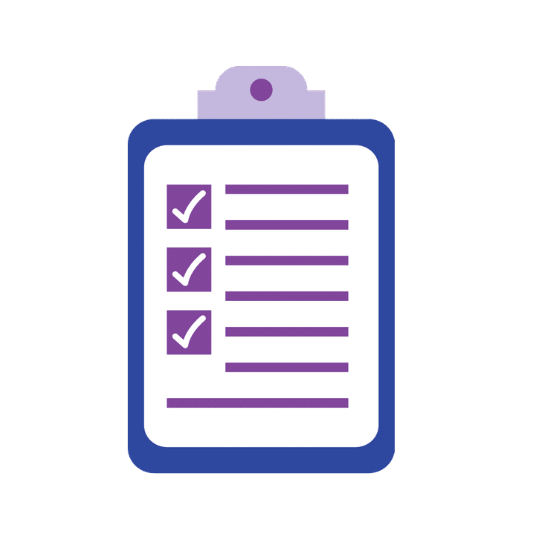 Aim to create your own personalised learning plan. This site (al-fanarmedia.org) provides useful tips on doing. Finding the appropriate template facilitates your goal. Canvas (al-fanarmedia.org) provides creative templates for free to motivate your learning.
Aim to create your own personalised learning plan. This site (al-fanarmedia.org) provides useful tips on doing. Finding the appropriate template facilitates your goal. Canvas (al-fanarmedia.org) provides creative templates for free to motivate your learning.
Follow the learning plan you created for two months. Make sure you have included a variety of tools depending on the skill you want to improve. You will find many usefil links among our links but here are a few just as a reminder.
Here are some examples of tools:
- Language Learning Websites for Listening Skills
- Easy Languages
- Netflix
- LanguagePod101
- Language Learning Websites for Speaking Skills
- italki
- Tandem
- The Mixxer
- Language Learning Websites for Reading Skills
- Readlang
- Lingua.com
- Reading A-Z
- Language Learning Websites for Writing Skills
- Conversation Exchange
- My Language Exchange
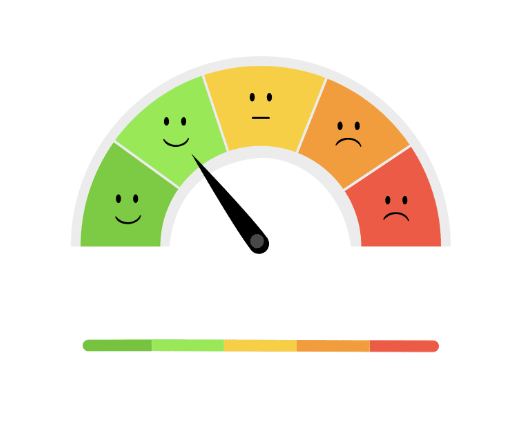 After the end of the first week, evaluate the functionality of your plan and, if needed, make the necessary changes. The evaluation must go hand-in hand with course goals. For this reason, revisit each and every goal you had set. Have you managed to meet it? Do you need more practice?
After the end of the first week, evaluate the functionality of your plan and, if needed, make the necessary changes. The evaluation must go hand-in hand with course goals. For this reason, revisit each and every goal you had set. Have you managed to meet it? Do you need more practice?
Revisit the tools you’ve used. Have you included interactive and audio-visual tools apart? Have you included enough exercises for practice? Get an idea of the listening tasks that you can do here (clozemaster.com) or choose one of the lists above.
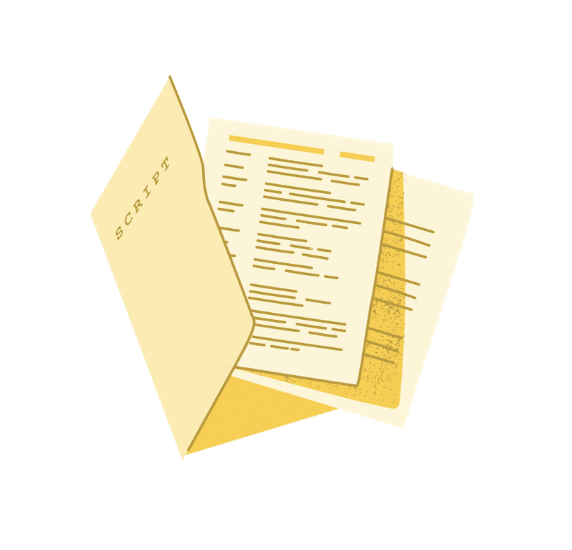 Use the key points noted during the learning process to draft a test that will help you later to maintain your knowledge. For example, if you struggle with grammar rules during the training, you can prepare more grammar exercises for your test.
Use the key points noted during the learning process to draft a test that will help you later to maintain your knowledge. For example, if you struggle with grammar rules during the training, you can prepare more grammar exercises for your test.
Unit test
